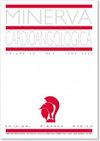Incidence of ventricular arrhythmias after biventricular defibrillator replacement: impact on safety of downgrading from CRT-D to CRT-P.
Q3 Medicine
引用次数: 1
Abstract
BACKGROUND Cardiac resynchronization therapy (CRT) reduces mortality and hospitalizations; it is debated whether CRT alone (CRT-P) or CRT plus defibrillator (CRT-D) is preferable, and still guidelines are not exhaustive. The aim of the study was to investigate whether to implant CRT-P or CRT-D in CRT-D patients who did not experience malignant arrhythmias at moment of replacement. METHODS Out of 451 heart failure patients undergoing CRT-D according to guidelines, 103 (67±10 years, 80% men) underwent device replacement with CRT-D. Every 6 months patients underwent to clinical evaluation and device interrogation and episodes of ventricular arrhythmias (VA) stored. At baseline and before replacement echocardiogram was performed. Patients were defined responders if left ventricular (LV) end-systolic volume decreased ≥15% and super-responders if LV ejection fraction increased ≥40% or ≥50%. RESULTS Mean follow-up was 75±24 months after implantation and 26±10 months after replacement. First VAs incidence per year did not decrease over time (p=0.619). Before replacement, 27 patients (26.2%, 15 responders/12 non-responders) experienced VA. After replacement, 8 patients (7.7%, 4 responders/4 non-responders) experienced VA for the first time. Super-responder condition was not associated with lower VA incidence before (=0.499) and after (p=0.339) replacement. At multivariate analysis, age was the only independent predictor of electrical appropriate therapy after substitution (ORper year =1.17; CI 95%= 1.03- 1.34; p=0.003). CONCLUSIONS Freedom from VA before device replacement does not correlate with freedom from VA after replacement, so downgrade from CRT-D to CRT-P is not feasible at replacement, in particular in the elderlies, independently of responder and super-responder condition.双室除颤器置换术后室性心律失常的发生率:对从CRT-D降级到CRT-P的安全性的影响
背景:心脏再同步化治疗(CRT)降低死亡率和住院率;单独CRT (CRT- p)还是CRT +除颤器(CRT- d)是更可取的,这是有争议的,而且指南也不详尽。该研究的目的是探讨在替换时没有恶性心律失常的CRT-D患者中是否植入CRT-P或CRT-D。方法451例心衰患者中,103例(67±10年,80%为男性)接受了ct - d置换术。每6个月对患者进行一次临床评估和设备询问,并记录室性心律失常(VA)发作情况。在基线和置换前进行超声心动图检查。如果左室收缩末期容积减少≥15%,患者被定义为反应者;如果左室射血分数增加≥40%或≥50%,患者被定义为超反应者。结果植入术后平均随访75±24个月,置换术后平均随访26±10个月。每年首次VAs发生率未随时间降低(p=0.619)。置换前有27例患者(26.2%,15例缓解者/12例无缓解者)经历了VA,置换后有8例患者(7.7%,4例缓解者/4例无缓解者)首次经历VA。超应答条件与置换前(=0.499)和置换后(p=0.339)降低VA发生率无相关性。在多变量分析中,年龄是替代后电适宜治疗的唯一独立预测因子(ORper年=1.17;Ci 95%= 1.03- 1.34;p = 0.003)。结论置换术前的VA自由度与置换术后的VA自由度不相关,因此置换术时从CRT-D降至CRT-P不可行,与应答者和超应答者情况无关。
本文章由计算机程序翻译,如有差异,请以英文原文为准。
求助全文
约1分钟内获得全文
求助全文
来源期刊

Minerva cardioangiologica
CARDIAC & CARDIOVASCULAR SYSTEMS-
CiteScore
1.60
自引率
0.00%
发文量
0
审稿时长
>12 weeks
期刊介绍:
A Journal on Heart and Vascular Diseases.
 求助内容:
求助内容: 应助结果提醒方式:
应助结果提醒方式:


